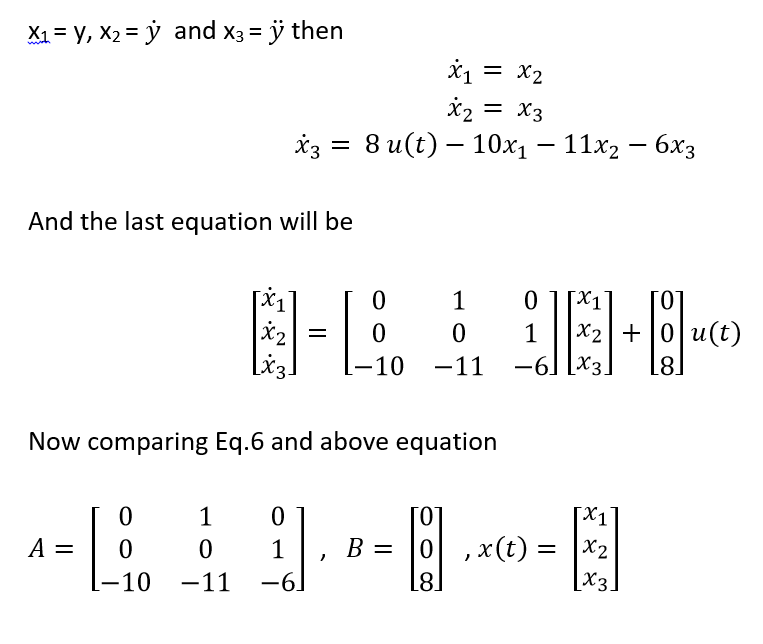State Space Model
The process by which the state of a system is determined is called state variable analysis.
Advantages of State Space Techniques
- This technique can be used for linear or nonlinear, time-variant or time-invariant systems.
- It is easier to apply where Laplace transform cannot be applied.
- The nth order differential equation can be expressed as ‘n’ equation of first order.
- It is a time domain method.
- As this is time domain method, therefore this method is suitable for digital computer computation.
- On the basis of the given performance index, this system can be designed for an optimal condition.
State Space representation of electrical system:
Consider an RLC network,
At time t = 0 Current = iL(0) Capacitor Voltage = Vc(0)
Thus, the state of the network at time t=0 is specified by the inductor current and capacitor voltage.
Therefore iL(0) and Vc(0) is called the initial state of the network and the pair iL(t), Vc(t) is called the state of the network at ‘t’. The variable iL and vc are called the state variables of the network.
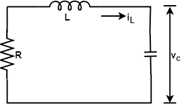
Apply KVL

Also,

From eq.1
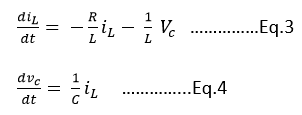
This type of equation is called State equation. And the variables present in this equation are called state variables.
Eq. 3 and Eq. 4 can be written in matrix form as
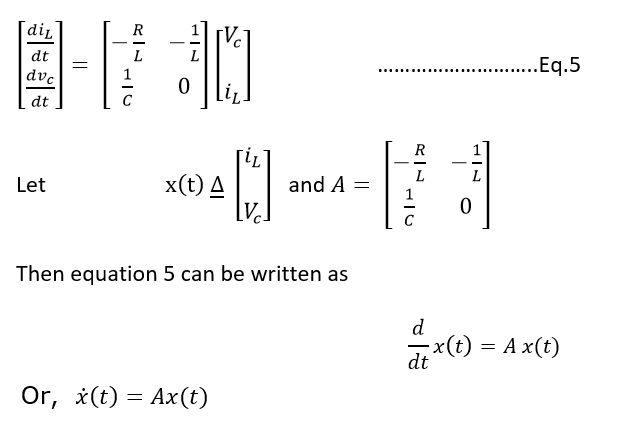
The general form of state equation is
Y = n- dimensional output vector
U = r-dimensional control vector or input vector
A = n × n system matrix
B = n × r control matrix
C = n × n output matrix
When there is no direct connection between input and output in that case D u(t) is not taken.
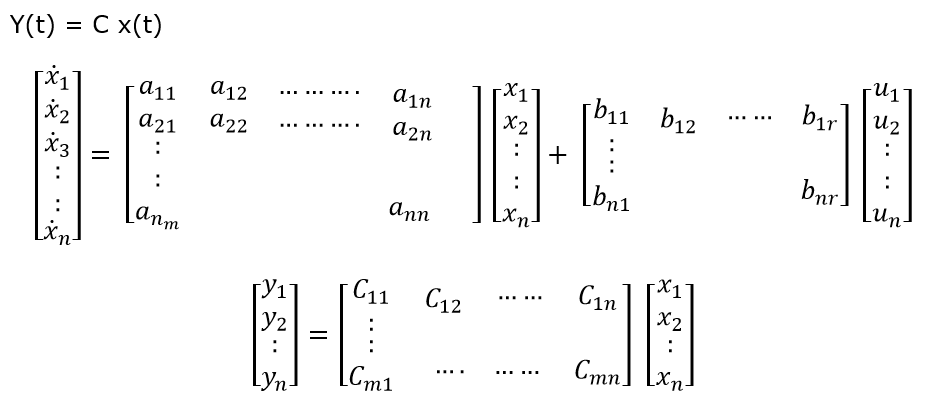
State Space Representation of nth order differential Equation
For the nth order differential equation
Example 1
A system is described by the differential equation

Where y is the output and u is the input to the system. Obtain the state space representation of the system.
Solution
